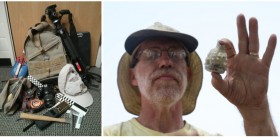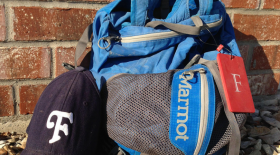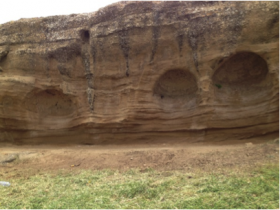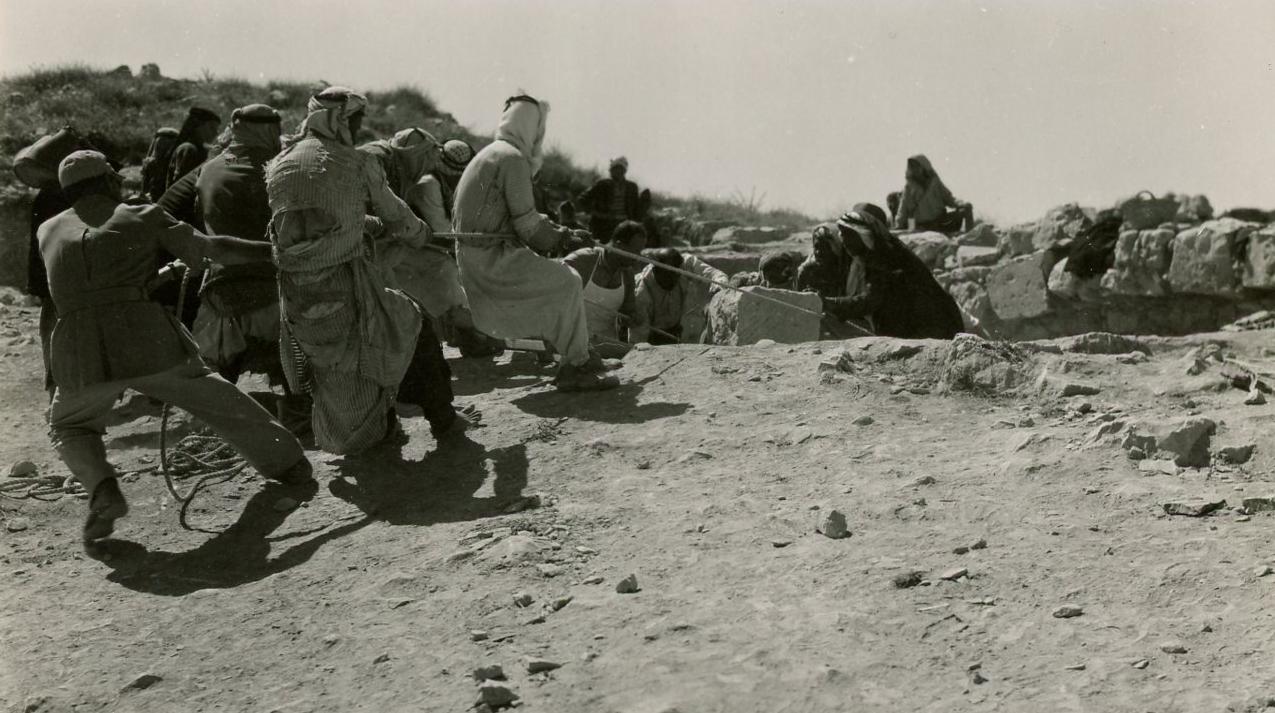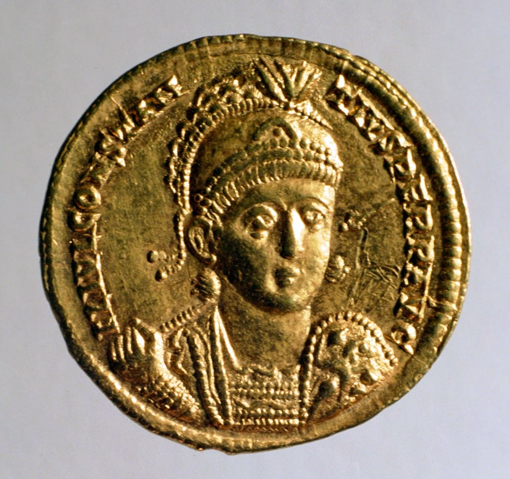What’s in your dig bag, Mark Schuler?
A typical day pack won’t work at our site. We have a bit of a daily hike up the mountain and must carry everything except large tools. Since basalt tends to be rough on nylon, I use a Maxpedition - Vulture-II™ backpack. It holds 34 liters of […]
What’s in your dig bag, Eric Welch?
In our “What’s in your dig bag?” series, we asked working field archaeologists what they carry with them out in the field. We wanted to know what gear they love and what items might be unique to them. I’m a baseball hat guy. In my mind, the Indiana […]
Andrews University Sicily Excavation
Studying archaeology, reading books related to the subject, and obtaining good grades in archaeology related courses does not turn one into a bona fide archaeologist. Having the privilege to participate in an archaeological excavation on the field is […]
ASOR Archives: The Dibon Excavation Collection
Did you know that the ASOR Archives documents over a century of American archaeological research in the Near East? The archive holds about forty collections, including the papers of past ASOR presidents, photograph collections, personal papers, and excavation collections. One of these is the Dibon Excavation Collection, which contains documents and photographs from ASOR’s dig […]
Coins and Plain Wares at Kourion’s Amathous Gate Cemetery
By: Anne Destrooper-Georgiades, Smadar Gabrieli and Michael Given One of the most striking features of the Greco-Roman city of Kourion on the south coast of Cyprus is the cemetery that lines the road leading up to the Amathous Gate on the south-eastern side of its Acropolis. The tombs range from the Hellenistic to Late Roman period […]
This Is Our City
The Question of Cultural Ownership and Cultural Heritage on Madaba’s West Acropolis By: Debra Foran, Department of Archaeology and Classical Studies Wilfrid Laurier University The question of who owns the past is a difficult one to address. There are often multiple stakeholders and the notion of a site’s importance for a global cultural heritage must […]
2013 Expedition to Khirbat Iskandar and its Environs
By: Cassandra Parsons Heritage Fellowship Recipient Normally, my response to the typical back-to-school or September-time question—the dreaded “How was your summer?”— is rather boring. Usually, summers are hot, and I typically work in a local pizza shop almost every day. That wasn’t the case this year, thanks in part to a Heritage Fellowship that […]
2013 Platt Fellowship: A Summer at Hippos Sussita
Matt Winter, Platt Fellowship Recipient My initial introduction to the site of Hippos Sussita, near Kibbutz Ein Gev in Israel, was one which left me feeling a sense of the grandeur this ancient city must have had. One of the member cities of the Decopolis, a region of ten major cities in what is today Israel, Jordan and Syria. […]
The “Earthquake House” in Cyprus
Erin Daughters, Tandy Institute for Archaeology at Southwestern Baptist Theological Seminary, Platt Fellowship Recipient Every day at Kourion, Cyprus, thousands of tourists arrive to see the beautiful mosaics, monumental buildings, baths, and theatre. My little sliver of Kourion, located to the southeast of the major architecture, is less visited. We have a few groups come […]
Pottery and the Petra Garden and Pool Complex (PGPC) Excavation
By: Sarah Wenner Heritage Fellowship Recipient This summer was one of the busiest and most exciting I have ever had, thanks in large part to Heritage Fellowship I received through ASOR, and one which showed me the diversity of sites in the Wadi Musa area. My first project was an excavation of the Petra […]
Journal of a Rowanduz Archaeological Project (RAP) Participant
By: Kyra Kaercher, PhD Candidate and 2013 Platt Fellowship Recipient Department of Archaeology, Boston University June 6th While waiting for our permit to be signed for the Rowanduz Archaeological Project (RAP), we went to a few gatherings hosted by the Mayor of Rowanduz. RAP is a project located in Northern Iraq, in the Autonomous Kurdish Region. This project is a […]
Hazor in the Tenth Century BCE
ANE Today Editorial Introduction:* Few topics are more controversial than the biblical kingdoms of David and Solomon. Were they and their rulers real, and if so, what archaeological remains did they leave? Or were they literary creations, exaggerations or even fabrications of later biblical writers? The arguments have raged for almost three decades without end, […]
Recipe for Surviving an Archaeological Excavation
By: Marielle Velander Meyers Fellow I’m already halfway through my three weeks as an archaeologist at Tel Kabri, a Middle Bronze Age palace in northwestern Israel, my participation made possible by the Meyers Fellowship through the American Schools for Oriental Research (ASOR). I’ve learned a lot already about what is necessary to get through […]
Digging the Iron Age at Bethsaida
By: Olga Goussev-Sushinsky Heritage Fellow For my first archaeological dig, I decided to choose Bethsaida. The site is located at north-east shore of the Sea of Galilee and is most known for its role in the New Testament. It is also renowned for being the capital of the Biblical kingdom Geshur. Led by Dr. […]
Excavating Canaanite remains at Tel Jezreel
By: Ashley Motes Heritage Fellow From May to June, I spent four weeks at Tel Jezreel in Israel participating in the Jezreel Expedition. Norma Franklin of Zinman Institute of Archaeology at Israel’s University of Haifa and Jennie Ebeling of University of Evansville were the directors of the project. The focus of the Jezreel Expedition is […]
Shalom from Huqoq, Israel!
By: Megan Hynek, 2013 Platt Fellowship recipient Deciding to dig in Israel was an easy decision. I am currently a fourth year archaeology student at the University of North Carolina at Chapel Hill. All archaeology students there are required to attend a dig field school. We have several options including digs in northern Peru, Mississippi, and […]
Archaeological Field Work in Egypt After the Revolution
By: James K. Hoffmeier, Trinity International University On January 25 the Egyptian revolution that toppled the thirty-year dictatorial reign of Hosni Mubarak began. On February 11th, Mubarak resigned. While the political news gripped much of the world, reports of some looting in the Cairo museum surprised everyone. Though limited in scope, security was quickly […]
Tel Hazor Bronze Age Photo Gallery
Photo Gallery: Here’s a gallery all the images that appear in Near Eastern Archaeology 76.2 for Hazor in the Middle and Late Bronze Ages. Smaller versions of some of the images also appear to illustrate the abridged version of the article on Hazor’s Ceremonial Precinct found on the ASOR Blog / ANE Today which you can […]
Near Eastern Archaeology in Malta
By: Anthony J. Frendo The Maltese archipelago lies practically at the centre of the Mediterranean, roughly midway between the eastern and the western Mediterranean Sea, and between the island of Sicily to its north and Libya to its south. Given this unusual location – between the Near East and Classical worlds and at the epicenter […]
Turning Dirt into Pixels
By: Colleen Morgan CLEAN * PHOTOGRAPH * DRAW * LEVEL * RECORD * SAMPLE * DIG * SORT ARTIFACTS * REPEAT In archaeological field work it is easy to become entranced. We have a cyclical mode of work, and it is this work that field archaeologists like the best, the kind that happens when the […]
